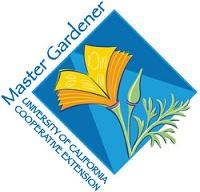
Laurus nobilis ‘Saratoga’—Bay Laurel
Gardeners looking for a small tree that can mostly be ignored and easily enjoyed need look no farther than Laurus nobilis ‘Saratoga.’ This hybrid between two larger Laurus species is not in the same genus as the native California bay laurel—Umbellularia californica—although all are members of the same Lauraceae family.
The ‘Saratoga’ version of its larger Mediterranean parents carries with it the same culinary value of flavorful evergreen leaves, although the California native species with a somewhat different bay flavor is also used.
Easy Care
‘Saratoga’ is such a winner because it is a relatively small, pretty, evergreen tree that provides year-round interest.
- Small, pale yellow flowers appear in late winter-early spring with a reasonably showy display. Flowers on this male tree do not produce fruit.
- Glossy, slightly leathery, olive green, rounded leaves with a lighter underside display a reddish tinge on new growth.
- Attractive foliage is deer resistant as well as resistant to insect problems from the laurel psyllid and soft scale that bother the larger Laurus parent trees.
- Because this tree is evergreen, only periodic maintenance is required to sweep up leaves that fall from time to time.
Growing Conditions
- Plant ‘Saratoga’ where it will enjoy full sun or part shade as well as excellent drainage, especially in winter.
- Provide infrequent irrigation once ‘Saratoga’ is well established 2 years after planting when it can adapt to low-water conditions; however, it requires some irrigation during extended dry periods.
- Ordinary-to-poor soil is adequate, but richer soil and regular irrigation promote faster growth.
Design options
‘Saratoga’ can be grown as a small tree or a large shrub. It tops out at about 20-25 ft. when left unpruned.
- The small size qualifies ‘Saratoga’ as a street tree or as a pleasant addition to a patio, either in the ground or in a container.
- The novice gardener may face a challenge in achieving a desired shape: a single-trunk standard tree, one with multiple trunks, or a shrub.
- In the ground, a multi-trunked tree becomes an interesting and attractive specimen.
- With judicious pruning after 2 years in the ground, ‘Saratoga’ can be maintained at a lower profile as a shrub.
- The shrub form may stand alone or be trained as a dense hedge and pruned regularly to achieve a desired height and width.
- For a single-trunk and street tree, try to purchase one with branches low on the trunk. These low branches promote girth, necessary to support the crown of foliage as it grows. Once the trunk has developed sufficient girth, the lower branches may be removed.
March 2024







